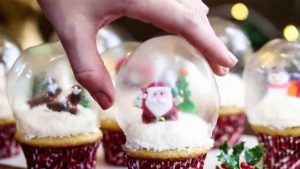 Keeping in the holiday spirit, here’s an IP story that will sweeten your day.
Keeping in the holiday spirit, here’s an IP story that will sweeten your day.
Protecting recipes with the traditional tools of intellectual property is difficult. Recipes are typically not copyrightable subject matter because, as merely a list of ingredients with directions on how to combine them, a recipe does not have the modicum of creativity required for copyright protection. That’s why so many valuable recipes are maintained by their owners as trade secrets. Thomas English Muffins, Coca-Cola, KFC, Chartreuse, and Mrs. Fields Chocolate Chip Cookies are a few well-known examples. But, as they say, there is more than one way to skin a cat when it comes to pursuing copyright infringers. Take for example, the case of Elizabeth LaBau who developed a unique method of creating cupcakes in the form of snow globes. Yes, you read that correctly, “snow globes.” How did she do that? If you’re interested you can find the recipe on her website, but it involves gelatin sheets and small water balloons. The picture above says it all. During the holiday season of 2014, LaBau posted her Snow Globe dessert recipe on her website. It quickly went “viral” and, according to reports, there was so much traffic that it crashed her website and tripled her income. That is all explained in detail in a lawsuit filed by LaBau in June 2017 against the Television Food Network for copyright infringement. According to allegations in the complaint, The Food Network didn’t copy her recipe but, instead, copied her video, which illustrated how to make the cupcakes. So, if copyright does not protect recipes, how then can it protect a video that is essentially the same as a recipe, i.e., a list of ingredients with instructions in video format? The answer is simple, if not creative. LaBau did not sue The Food Network for infringing her recipe but, rather, for infringing the creative elements of her video. Here’s what her complaint alleged:
the Food Network video copied numerous copyrightable elements of Plaintiff’s work precisely, including but not limited to choices of shots, camera angles, colors, and lighting, textual descriptors, and other artistic and expressive element of Plaintiff’s work.
The Food Network settled the lawsuit in November 2017 but it can still publish the recipe, just not the video. Have a recipe you want to protect? Let us know and we’ll get creative. Happy Holidays!
— Adam G. Garson, Esq.

